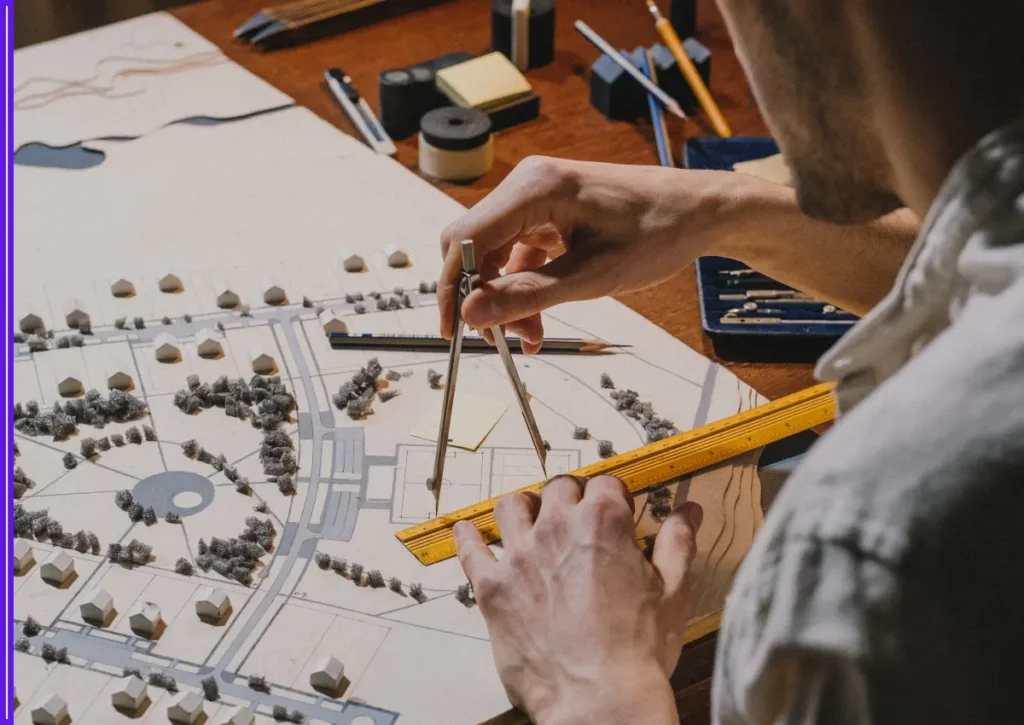As cities evolve and societal needs shift, architects across the globe are redefining the purpose and functionality of the built environment. The new wave of design focuses on adaptability, inclusivity, and sustainability—reshaping how we work, engage with culture, and interact in public spaces.
Today’s architectural discourse is moving beyond form to function with purpose. Workspaces, cultural hubs, and public spaces are being reimagined to address the growing demand for flexibility, wellness, and environmental responsibility.

Redefining the Modern Workplace
With remote and hybrid work becoming a norm, office architecture is undergoing a dramatic transformation. Designers are moving toward modular layouts, natural ventilation, and biophilic elements to enhance employee wellbeing and productivity.
“In the post-pandemic era, workspaces are no longer rigid,” said Rajeev Arora, a Mumbai-based architect. “They need to support collaboration while also offering quiet zones for focus. Adaptability is key.”
Companies are investing in smart buildings equipped with responsive lighting, climate control, and acoustic systems that cater to evolving work styles.
Culture Spaces with a Community Focus
Cultural institutions are increasingly embracing flexible layouts to support varied programming—from digital art exhibits to public forums and performance art. These spaces are designed not only to host events but also to foster interaction, inclusivity, and dialogue.
In cities like Bengaluru and Kolkata, museums and art centres are incorporating multipurpose galleries, open courtyards, and community zones to engage visitors beyond traditional exhibits.
Public Life at the Forefront
Urban architecture is witnessing a shift towards human-centric planning. Streetscapes are being redesigned to prioritize pedestrians, cyclists, and accessibility for the differently-abled. Shaded walkways, interactive public furniture, and open-air social zones are becoming common elements in new developments.
“Public architecture must serve the people,” said Rina Deshmukh, an urban planner based in Pune. “It’s not just about aesthetics, but about creating safe, engaging, and inclusive environments.”
Several Indian cities are piloting projects that transform underutilized public land into vibrant community hubs, often blending cultural identity with modern utility.
A Sustainable Approach
Environmental sustainability is now a fundamental consideration in architecture. Builders and designers are integrating solar power, rainwater harvesting, and recycled materials into their projects. Passive design techniques—such as maximizing natural light and airflow—are being used to reduce dependency on energy-intensive systems.
India’s newer projects are increasingly aiming for net-zero targets, aligning with global climate goals and government green-building incentives.
Looking Ahead
As architecture embraces technology, tradition, and social responsibility, future-ready spaces are expected to be more fluid and connected than ever before. Whether it’s a flexible office floor, a digitally immersive museum, or a green public plaza, the emphasis is on creating structures that respond to change and enhance quality of life.
“Architecture today is about resilience and relevance,” said Arora. “We’re not just building for now—we’re designing for what’s next.”
Let me know if you’d like to add quotes from known architects, examples from specific projects, or tailor this for a regional focus.









